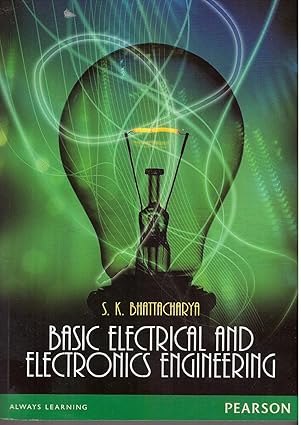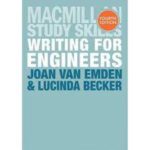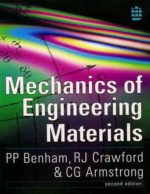This book provides an overview of the basics of electrical and electronic engineering that are required at the undergraduate level. Efforts have been taken to keep the complexity level of the subject to bare minimum so that the students of non electrical/electronics can easily understand the basics. It offers an unparalleled exposure to the entire gamut of topics such as Electricity Fundamentals, Network Theory, Electro-magnetism, Electrical Machines, Transformers, Measuring Instruments, Power Systems, Semiconductor Devices, Digital Electronics and Integrated Circuits.
Basic Electrical and Electronics Engineering
This book provides an overview of the basics of electrical and electronic engineering that are required at the undergraduate level. Efforts have been taken to keep the complexity level of the subject to bare minimum so that the students of non electrical/electronics can easily understand the basics. It offers an unparalleled exposure to the entire gamut of topics such as Electricity Fundamentals, Network Theory, Electro-magnetism, Electrical Machines, Transformers, Measuring Instruments, Power Systems, Semiconductor Devices, Digital Electronics and Integrated Circuits.
Related products
-
ENVIRONMENTAL ENGEENIRING
KSh 4,200.00The standard for Environmental Engineering FE Review includes;
- 110 practice problems, with full solutions
- Set up to provide in depth analysis of likely FE exam problems
- This guide will get anyone ready for the FE Exam
Topics covered
- Air Quality Engineering
- Environmental Science & Management
- Solid & Hazardous Waste Engineering
- Water & Wastewater Engineering
- Hydrologic and Hydrogeological Engineering
-
Mechanics of Engineering Materials-P.P BENHAM & R.J Crawford
KSh 3,000.00Mechanics of Engineering Materials” by P.P. Benham and R.J. Crawford is a widely used textbook that introduces students and professionals to the fundamental principles of material mechanics and structural behavior. The book covers essential topics such as stress and strain analysis, elasticity, plasticity, fracture, fatigue, and creep. It blends theory with practical applications, making it suitable for engineering students across mechanical, civil, and materials engineering. With clear explanations, worked examples, and practice problems, the text provides a strong foundation for understanding how materials behave under different loading conditions and how to design safe, efficient structures.
-
Writing for Engineers (Bloomsbury Study Skills, 31)
KSh 4,620.00This book is full of practical advice and useful examples to help students and engineers write clearly, accurately and impressively. This updated fourth edition features new material on technical notes, inspection reports and business cases, along with abstracts and summaries. It is an essential aid for today’s engineers.
-
Agricultural Sustainability by Elisa Gomez Gonzalez (Author)
KSh 21,000.00Agricultural Sustainability starts with an overview of agricultural sustainability and the factors influencing the agricultural sustainability. As agricultural sustainability is all about understanding ecosystem services and can be seen as a study of relation between organisms and their respective environment, this text has been written to cover all these aspects. Further, sustainability in poultry and aquaculture has been described to broaden the research and potential of agricultural sustainability in arid and semi-arid areas has also been discussed
-
Future Hype: The Myths of Technology Change
KSh 1,595.00Future Hype surveys the past few hundred years to show that many of the technologies we now take for granted transformed society in far more dramatic ways than more recent developments so often touted as unparalleled and historic. In this thoughtful book, Bob Seidensticker exposes the hidden costs of technology—and helps both consumers and businesses take a shrewder position when the next “essential” innovation is trotted out.
-
Research Methods for Engineers
KSh 6,300.00Learn how to plan for success with this hands-on guide to conducting high-quality engineering research. Plan and implement your next project for maximum impact: step-by-step instructions cover every stage in engineering research, from the identification of an appropriate research topic through to the successful presentation of results. Improve your research outcomes: discover essential tools and methods for producing high-quality, rigorous research, including statistical analysis, survey design, and optimisation techniques. Research with purpose and direction: clear explanations, real-world examples, and over 50 customisable end-of-chapter exercises, all written with the practical and ethical considerations of engineering in mind. A unique engineering perspective: written especially for engineers, and relevant across all engineering disciplines, this is the ideal book for graduate students, undergraduates, and new academics looking to launch their research careers.
-
Environmental Engineering Paperback – 14 July 2017
KSh 7,500.00The book covers the important aspects of water, air and noise pollution. Using a multidisciplinary approach, it highlights the impact of environmental pollution in the world. It also suggests methods for controlling and scientific monitoring of pollution-causing agents. Also included are chapters on efficient guidelines and standards, radioactive waste, solid waste disposal and sewage treatment, oil pollution and role of insecticides. Pollution in tanneries, fertilizer industry, and pulp and paper industries is also covered. The last few chapters are devoted to environmental management, benefit-cost analysis and mathematical modelling for environmental pollution control.
-
Mechanics of Engineering Materials (2nd Edition)
Mechanics of Engineering Materials is well-established as the definitive textbook on the mechanics and strength of materials for students of engineering principles throughout their degree course. Assuming little or no prior knowledge, the theory of the subject is developed from first principles and all topics of stress and strain analysis are covered right up to final year level. Mechanical properties such as tensile behaviour, fatigue, creep, fracture and impact are discussed and more advanced material is also included, particularly on finite element analysis, fracture mechanics and composite materials.
This second edition has been brought fully up-to-date in line with today’s courses. Incorporating new, two-colour illustrations throughout, the book reinforces student comprehension of the theory through numerous new worked examples and end-of-chapter problems involving real engineering situations. An important new feature of this edition is the use and illustration of computer spreadsheets throughout as a powerful problem-solving tool.
Mechanics of Engineering Materials is an indispensible course text for undergraduate students of mechanical engineering, engineering science and civil engineering. It will also be a valuable reference for those studying BTEC and GNVQ courses.










Be the first to review “Basic Electrical and Electronics Engineering”